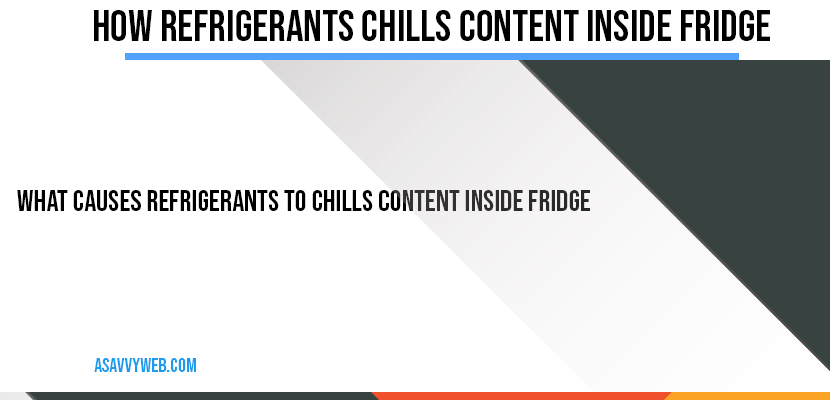To understand refrigerators, pour a small quantity of petrol in your hand and expose it to the atmosphere. The petrol evaporates leaving a cooling sensation and thus cause Refrigerants chills content Inside fridge. This is because the petrol has taken that heat from the hand and transformed into vapor, this is known as latent heat of vaporization.
How Refrigerants chills content Inside fridge ?
The working substances in the refrigerator is called a refrigerant. It is compressed to a high pressure and then allowed to condense by rejecting its heat to the atmosphere surrounding it. The liquid is then allowed to expand at a low pressure. During this process it absorbs heat from the space inside the refrigerator and become a vapour. The above cycle is repeated in vapour compression refrigeration which differs fundamentally from vapour absorption system.
The major compounds in a refrigerant are halocarbon compounds which includes halogens, chlorine, fluorine and bromine, hydrocarbons (such as methane, ethane and propane); inorganic compounds (such as ammonia, water and air) and unsaturated organic compounds (hydrocarbon with ethylene and propylene base).
What Causes Refrigerants to chills content Inside fridge:
Refrigerant is the working fluid in a fridge. It should have a low boiling point so that it vaporises at low temperatures and absorbs the heat from a substance. Some of the common refrigerants are ammonia, carbon-di-oxide and freon. Ammonia is often used as it is cheap and easily available. But it is toxic and explosive at high temperatures. Carbon-di-oxide was one of the first refrigerants used but presently its use is limited. It is a non-toxic and non0explosive but causes suffocation when its concentration is high.
Freon 12 has a boiling point of 30 degree Celsius. This refrigerant is fluorocarbon of methane and ethane series. It is a combination of halogens, chlorine and fluorine It is the most commonly used refrigerant. Its chemical name is dichloro-difluoro-methane. It condenses at a moderate pressure under normal atmospheric temperature. This property makes it the most suitable refrigerant.

